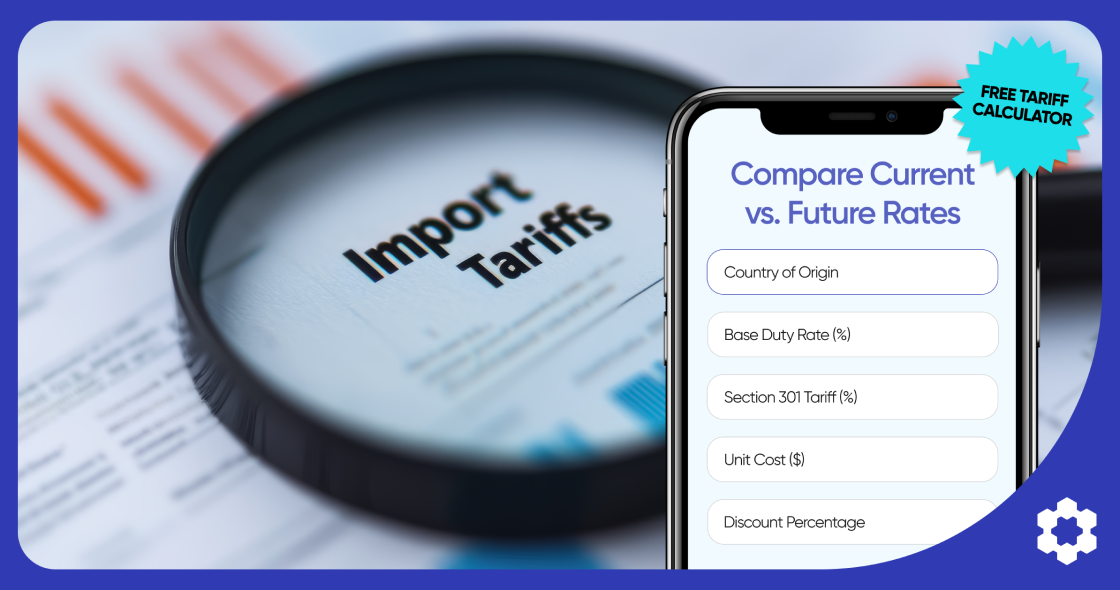
May 29, 2025 Amazon Tariffs Update
Court Blocks Trump’s 2025 Tariffs: What Suppliers and Sellers Need to Know (May 29, 2025)
Key Takeaways
- No immediate changes at the border: Keep paying tariffs as before until you hear otherwise from CBP.
- The sweeping 2025 tariffs are in legal limbo: Their future depends on the appeal and potential new White House strategies.
- Plaintiff response to appeal needed by June 5th, followed by administration response by June 9th.
- Older tariffs and product-specific duties remain unchanged.
- Watch for further guidance: Refunds may be possible if the appeal fails.
- Recent targeted trade deals are not affected by this ruling.
Summary of the Ruling
- A U.S. federal trade court has blocked President Trump’s broad new “Liberation Day” tariffs.
- The court ruled that the emergency law Trump used (IEEPA) does not give the president authority to unilaterally impose tariffs on most of the world. Only Congress can set such broad trade policy.
- This decision does not affect older tariffs on certain goods like cars, steel, and aluminum, which were imposed using separate laws.
What Happens Now?
- White House Response: Trump administration is appealing the ruling and has asked the court to block (pause) the order while the appeal plays out.
- Practical Effect:
- The court has given the White House 10 days to begin halting the tariffs.
- For now, importers should continue paying tariffs at the border until Customs and Border Protection (CBP) issues new instructions.
- If the White House loses its appeal, CBP may refund tariffs paid under the blocked regime.
- The appeals process could eventually be pushed up to the Supreme Court.
- Temporary tariffs (15% for 150 days) could be imposed through executive authority and are currently being considered.
How Does This Impact Suppliers and Sellers?
- No Immediate Change:
- Keep paying tariffs at the border for now.
- Nothing changes until Customs gives official word, even though the new tariffs are technically blocked.
- Possible Refunds Later:
- If the appeal fails, CBP may direct refunds for tariffs paid under the blocked policy.
- Refunds would be retroactive to April 2nd for tariffs collected in connection with Trump’s aggressive trade policy.
- Additionally, while cases are limited, due to the April 29th Executive Order 14289 prohibiting certain tariff stacking, some importers may receive refunds for tariffs that were improperly stacked and charged together.
- Older Tariffs Still Apply:
- Tariffs on goods like cars, steel, aluminum, and many products from China remain in effect.
- Tariffs on goods like cars, steel, aluminum, and many products from China remain in effect.
Summary Table: U.S. Tariffs After the Court Ruling (May 29, 2025)
| Tariff Type / Legal Basis | Status After Ruling | What It Means for Your Imports |
| 2025 “Liberation Day” Tariffs (IEEPA) | Blocked by court (appeal pending) | Tariffs technically halted, but still being collected until further CBP notice. Possible refunds if appeal fails. |
| Older Section 232 (Steel, Aluminum, Autos) | Still in effect | Tariffs on these goods continue as before. |
| Older Section 301 (China tariffs) | Still in effect | Tariffs on many Chinese products remain. |
| Temporary Tariffs (15%/150 days) | Still possible under law | Could be used in future, but not imposed yet. |
| Congressional Action | Always possible | Would require new law; not immediate. |
Amazon Tariffs Calculator
Use our Tariff Impact Calculator to instantly see how the latest tariff changes will impact your business costs. Simply enter your product’s standard duty rate and country of origin to compare your expenses before and after the new tariffs take effect.
Knowing your exact tariff exposure is essential for building a smart sourcing and pricing strategy. Our calculator gives you a clear, side-by-side view of your costs—both during the current 90-day tariff reduction and after the scheduled rate increases on July 9 (for most countries) and August 12 (for China).
US Import Tariff Calculator
Updated May 23: Compare the impact of your current and future tariff rates
May 2025 Amazon Tariffs Update
Major China Tariff Reduction Announced
On May 12, 2025, President Trump issued an executive order significantly reducing tariffs on Chinese goods following trade discussions with China. These changes impact all Amazon sellers and vendors sourcing from China and require immediate updates to your cost calculations and sourcing strategy.
Key Changes Effective May 14, 2025
1. China Tariff Reduction
- Previous Rate (as of April 2025): 125% reciprocal tariff (plus 20% IEEPA fentanyl tariff for most goods, totaling up to 145% for some products). Section 301 tariffs, introduced in 2018, were applied in addition to these new tariffs.
- New Rate: Temporarily reduced to reciprocal tariffs by 115% down to 10% for most Chinese imports for a 90-day period (May 14–August 11, 2025)
- Total Effective Tariff: For products also subject to the fentanyl tariff, the combined rate is 30% (10% reciprocal tariff + 20% IEEPA fentanyl tariff)
- What Happens Next: Unless a new agreement is reached, the tariff rate will automatically revert to the original April 2nd reciprocal 34% tariff on August 12, 2025.
2. De Minimis Changes for Chinese Goods
- Previous Rate: 120% ad valorem tariff on postal shipments under $800
- New Rate: Reduced to 54% ad valorem tariff
- Flat Fee: The $100 per postal item fee (effective May 2) remains in effect
- June 1 Increase Suspended: The planned increase to $200 per item on June 1 has been canceled
3. Duration of Changes
- The tariff reduction is temporary, lasting for a 90-day period from May 14 through August 11, 2025.
- Starting August 12, 2025, the tariff is scheduled to return to 34% unless further negotiations result in an extension or additional changes.
- Ongoing trade negotiations may affect future rates.
Strategic Considerations
- Short-term Opportunity: Consider expediting orders from China during this 90-day window to take advantage of lower tariff rates.
- Long-term Planning: Continue diversification efforts, as the reduced rates are temporary and may return to higher levels after August 11.
- Small Package Strategy: With the reduced ad valorem rate on postal shipments (54% down from 120%), recalculate the economics of smaller shipments versus consolidated freight.
- Cash Flow Impact: The substantial reduction in tariffs could significantly improve cash flow for businesses heavily reliant on Chinese manufacturing.
- Pricing Strategy: Decide whether to maintain current pricing to improve margins or reduce prices to drive volume while tariffs are lower.
Next Steps for Amazon Sellers
- Recalculate Costs: Use our updated Tariff Impact Calculator to determine exactly how these changes affect your business.
- Review Inventory Plans: Assess whether to increase order quantities during this 90-day window.
- Establish a Capacity Strategy: With capacity limits decreasing, ensure you have a plan to store excess stock outside of FBA.
- Monitor Developments: Stay alert for future announcements, as the situation remains fluid and could change after the 90-day period.
- Supplier Negotiations: Consider renegotiating with Chinese suppliers who may have offered concessions during the high-tariff period.
- Long-term Strategy: Continue exploring alternative sourcing options as part of a robust risk management strategy.
We’ll continue to update this information as new developments emerge. For regular updates and strategic advice, subscribe to our newsletter.
April 2025 Amazon Tariffs Update
As of April 2025, the US has implemented major trade policy updates that directly affect Amazon sellers importing goods globally, especially from China. These changes influence sourcing strategies, pricing, and supply chain efficiency. The tariff situation remains fluid, with President Trump announcing new developments and exemptions as recently as April 13, 2025.
Understanding the New Tariff Structure
Quick Facts
- De Minimis Exception (China only): Eliminated for low-value Chinese goods; still available for most other countries
- China Tariffs: 145% additional tariff (20% base + 125% reciprocal), stacked on top of existing base duty rates and Section 301 tariffs
- Base Duty Rate: The standard import tariff applied to goods from most countries, ranging between 0%–5% depending on the HTS code.
- Section 301 Tariffs (China only): Introduced in 2018 and still in effect, with duties ranging from 7.5%–100% tariffs.
- IEEPA Tariff (China only): Under the International Emergency Economic Powers Act (IEEPA), an additional 20% emergency tariff was introduced to address unfair trade practices by China effective March 4, 2025. Sometimes referred to as the fentanyl tariff, it aims to pressure China to curb fentanyl trafficking into the U.S. and could be reduced or removed if China takes effective action.
- Reciprocal Tariff (China only): A 125% tariff applies to all Chinese imports effective April 9, 2025. The tariff rate escalated quickly as China and Trump exchanged retaliatory increases in a growing trade standoff.
- Total Impact on Chinese Imports: As these tariffs stack one on top of the other, cumulative tariff burden for Chinese imports can climb to 245%, before shipping or storage fees
- Universal Tariff (Most Other Countries): A flat universal minimum 10% import duty applied to most trading partners with some isolated exceptions for specific countries and goods , effective as of April 10th.
- Reciprocal Tariff (Approximately 60 Select Countries): Reciprocal tariffs seek to balance the scales by raising U.S. tariffs while pressuring trading partners to reduce theirs. For example, U.S. agricultural products face a 100% tariff at India’s borders, while our average tariff on Indian goods is just 5%. Proposed reciprocal tariffs for India are 27%.
- Reciprocal tariffs were to be implemented April 9th, but were paused until July 9, 2025 for additional negotiations, when rates will resume, varying from 11%–46% depending on the country.
| Source Country | Reciprocal Tariff Rate (Apr 5 – Jul 8 2025) | Reciprocal Tariff Rate (After Jul 9 2025) | Notes |
| China | 145% (20% + 125% additional) | 145% | Additional to normal duties; de minimis exemption revoked; includes Hong Kong & Macau |
| Canada (USMCA-qualified) | 0% | 0% | Must meet specific USMCA rules of origin requirements and provide proper certification |
| Canada (Non-USMCA) | 25% | 25% | Additional to normal duties; applies to products that don’t meet USMCA requirements |
| Mexico (USMCA-qualified) | 0% | 0% | Must contain significant North American content and meet documentation requirements |
| Mexico (Non-USMCA) | 25% | 25% | Applies to products with significant non-North American components |
| EU Countries | 10% | 20% | Additional to normal duties; temporary relief until July 9; potential further increases for alcohol |
| UK | 10% | TBD | Currently threatened with potential DST-related tariffs; rate not yet specified |
| Vietnam | 10% | 46% | Additional to normal duties; popular alternative to China but faces high tariff increase |
| Thailand | 10% | 37% | Additional to normal duties; strong in home goods furniture and food products |
| India | 10% | 27% | Additional to normal duties; growing alternative for textiles jewelry and handicrafts |
| Indonesia | 10% | 32% | Additional to normal duties; strong in furniture textiles and natural products |
| Malaysia | 10% | 24% | Additional to normal duties; electronics and tech components manufacturing hub |
| Philippines | 10% | 18% | Additional to normal duties; lowest rate among Asian alternatives; strong in consumer goods |
| South Korea | 10% | 26% | Additional to normal duties; premium electronics beauty products and automotive parts |
| Taiwan | 10% | 32% | Additional to normal duties; high-quality electronics components and tech products |
| Japan | 10% | 24% | Additional to normal duties; premium electronics beauty and specialty consumer goods |
| Cambodia | 10% | 49% | Additional to normal duties; one of the highest rates; primarily textiles and apparel |
| Bangladesh | 10% | 37% | Additional to normal duties; major producer of garments textiles and leather goods |
| Singapore | 10% | 25% | Additional to normal duties; threatened with potential oil-related tariffs |
| Pakistan | 10% | 30% | Additional to normal duties; strong in textiles sporting goods and leather products |
| Sri Lanka | 10% | 44% | Additional to normal duties; high tariff rate; apparel rubber products and tea |
| Brazil | 10% | TBD | Additional to normal duties; rate after July 9 not specified; footwear and agricultural products |
| Turkey | 10% | TBD | Additional to normal duties; potential DST-related tariffs; textiles and home goods |
| Israel | 10% | 17% | Additional to normal duties; one of the lower rates; tech pharmaceuticals and jewelry |
| Jordan | 10% | 20% | Additional to normal duties; moderate rate; apparel and textile manufacturing |
China Tariff Stack
Chinese imports now face one of the most aggressive tariff structures in U.S. history. These new tariffs apply in addition to Base Duty rates and the Section 301 tariffs that have been in place since 2018.
Total Tariff Breakdown for $1,000 Shipment Value from China
| Tariff Layer | Rate | Cost Impact | |
| Base Duty | 2% | $20 | Varies by product based on HTS code; often between 0%–5% for Amazon-relevant goods |
| Section 301 Tariff | 25% | $250 | 7.5%–100% (varies by list). Applies to a broad range of Chinese consumer goods |
| IEEPA Tariff | 20% | $200 | Emergency tariff imposed on all Chinese imports |
| Reciprocal Tariff | 125% | $1,250 | In response to Chinese retaliatory tariffs; applies across all good |
| Total Tariffs | 172% | $1,720 | Added on top of Section 301 tariffs |
| Total Landed Cost | — | $2,720 | Tariff increases for non-China countries begin July 9, 2025 |
So $1,000 in product imported from China could now cost $2,720 landed—before you even factor in freight, FBA fees, or storage.
De Minimis Rule Changes
The de minimis threshold previously allowed imports valued under $800 to enter the US duty-free. As of April 2025:
1. Complete De Minimis Elimination for Chinese Goods
Effective May 2, 2025, all imports from China and Hong Kong are excluded from the U.S. de minimis exemption. That means every package, regardless of value, is now subject to tariffs and import procedures. Previously, shipments under an $800 value could enter duty-free — a loophole heavily used by sellers on platforms like Temu and Shein.
2. Tariffs on Postal Shipments
For packages under $800 shipped via international mail, the U.S. has introduced steep new charges: 120% ad valorem tariff – based on the item’s value – or a flat $100 fee per postal item starting May 2, whichever is greater, increasing to $200 per item on June 1, 2025.
For a $50 package, you’d pay $60 in April (120% tariff), $100 from May 2 to May 31 (flat fee), and $200 starting June 1 (flat fee).
These changes eliminate the cost-saving benefits of using postal networks for small Chinese shipments.
3. De Minimis Still Applies Elsewhere
For now, the $800 de minimis threshold remains in effect for shipments from non-Chinese countries, providing an opportunity to shift sourcing and maintain duty-free entry for low-value items.
4. Additional Duties Still Apply (Sections 201/232/301)
Even with de minimis in place for other countries, goods falling under these trade enforcement programs still face duties:
- Section 201 – Solar panels, washing machines
- Section 232 – Steel and aluminum
- Section 301 – Broad categories of Chinese imports
Financial Impact on Amazon Sellers in 2025
New tariffs, combined with the elimination of de minimis benefits, are fundamentally changing the cost structures for both 3P sellers and 1P vendors.
For 3P Sellers
Many 3P sellers — especially those sourcing from China — now face massive increases in landed costs due to new U.S. tariff rules. Let’s break down what this means.
Before April 2025: A $600 shipment of hair accessories from China could enter the U.S. duty-free under the $800 de minimis rule.
After May 2, 2025, two scenarios apply depending on shipping method:
Postal Shipment (e.g., via USPS)
- 120% tariff = $720
- Or $100 per item, whichever is greater
- Total Cost = $1,320
Non-Postal Shipment (e.g., courier or cargo)
- Stacked tariffs (10% + 20% + 125% = $930
- Total Cost = $1,530
- Additional paperwork and customs filings required
Note: These calculations exclude base duties, Section 301 tariffs, IEEPA, and Reciprocal. Actual costs may be higher depending on HTS classification
These changes hit hardest for China-based sellers — who, according to Marketplace Pulse, make up nearly 50% of Amazon’s 10,000 largest 3P sellers.
For 1P Vendors
Amazon 1P vendors – who supply goods directly to Amazon under contract – face even greater financial strain because Amazon often forces them to absorb tariff-related costs without offering the pricing flexibility that 3P sellers have.
Key Data Points from Morgan Stanley:
- 25% of Amazon’s 1P inventory comes from China
- 1P products make 40% of all Amazon sales
- Compared to other ecommerce players, Amazon has high tariff exposure:
- Amazon (25%) vs. Industry Average (~10%)
- Other platforms: Revolve (22%), eBay (11%), Etsy (3%), Peloton (3%), Figs (0%)
Margin Squeeze for Vendors: A vendor supplying $1M in Chinese goods now faces:
- 155% tariff → $1.55M in new costs
- Limited ability to pass this cost to Amazon without renegotiating contracts
- Many vendors must either absorb the costs or risk damaging their Amazon partnership
Amazon Seller Compliance 2025
The new regulatory environment creates several operational hurdles:
- HTS Code Accuracy: The shift to mandatory 10-digit HTS codes increases complexity. Misclassification can result in significant fines on product value.
- Forced Labor Compliance: Customs and Border Protection (CBP) is intensifying scrutiny of supply chains, particularly for Chinese goods. Penalties can include large fines and imprisonment.
- Customs Delays: Enhanced entry requirements are extending clearance times, leading to delays and potential inventory stockouts.
Recover lost revenue from Amazon and Walmart—fast. Our expert-led deduction and chargeback management system helped Farouk Systems recover $1M in just 8 months. Explore Carbon6 Profit Recovery.
Strategies to Mitigate Tariff Impact
Duty Drawbacks: Getting Money Back
A little-known strategy that can recover significant costs is duty drawbacks – essentially refunds of duties you’ve already paid:
- What They Are: Refunds of up to 99% of duties, taxes, and fees paid on imported goods that are later exported or destroyed under supervision.
- When They Apply:
- You paid customs duties on products you imported
- The products didn’t sell and were destroyed under supervision
- You exported the products and sold them through non-US channels (e.g., Amazon.ca)
- Qualifying Questions:
- Do you import products or raw materials and then export them?
- Have you written off unsold inventory by shipping it overseas or destroying it?
- Are you paying significant duties on imported goods?
- Do you have reliable documentation on shipments in and out?
- Have you grown internationally and now export more than before?
- Process: There are very specific steps required to file and execute a duty drawback, including filing an Intent to Export, Destroy or Return form and working directly with U.S. Customs & Border Protection throughout the process. Consult with a customs broker to assist in filing claims and building processes within your own business.
Bonded Warehouses: Deferring Tariff Payments
Another powerful strategy, especially for sellers facing cash flow challenges, utilizing bonded warehouses:
- How They Work: Products are stored in special Customs bonded warehouses where tariffs remain unpaid until items are withdrawn for sale.
- Benefits:
- Pay duties only when you pull units out for sale
- Improve cash flow by spreading out tariff payments over time
- Match tariff costs to actual sales rather than paying upfront
- Potentially avoid duties entirely on items that don’t sell or are re-exported
- Process:
- Consult with a professional customs broker to gain a more detailed understanding of the process including fee structure, paperwork filings and other requirements.
Supply Chain Diversification
Relying solely on Chinese manufacturing is now riskier than ever with the 145% tariff rate:
- Short-term (April-June 2025):
- Expedite shipments from countries facing increases after July 9
- Verify country of origin documentation for all inventory
- Reassess pricing to account for current tariffs (especially the 145% on Chinese goods)
- Assess other cost centers (fees, etc.) for potential reductions to offset tariff increases
- Consider air freight for urgent inventory before July deadlines
- Review inventory mix and potentially discontinue low-margin Chinese products
- Mid-term (July-December 2025):
- Consider shifting 30-50% of production to alternative markets like the Philippines (18% tariff after July), India (27%), or Malaysia (24%)
- Evaluate USMCA-qualified manufacturing in Canada/Mexico (0% additional tariff)
- Consider “Made in USA” alternatives for high-tariff items
- Country Selection Strategy: When selecting alternative sourcing countries, consider:
- Tariff rate impact: The difference between 27% (India) vs. 46% (Vietnam) is significant
- Manufacturing capabilities: Each country has specific industries they excel in:
- Vietnam: Furniture, apparel, electronics
- India: Textiles, jewelry, handicrafts
- Malaysia/Taiwan: Electronics and tech components
- Cambodia/Bangladesh: Apparel and textiles
- Mexico: Automotive, electronics, furniture (with USMCA benefits)
- Shipping times and costs: Proximity to the US can offset higher tariff rates
- Quality control infrastructure: Some countries have more established manufacturing standards
- Supply chain risks: Evaluate political stability and secondary tariff threats
- Leverage SPS Commerce: The SPS Retail Network provides access to vetted US manufacturers, to streamline your supply chain operations.
Optimizing Fulfillment Strategy
As supply chain faces delays and becomes more expensive, it may be a good time to reassess and identify areas of your business where you can offset these challenges.
- Seller Fulfilled Prime (SFP): Bypassing FBA check-in delays with SFP may lead to faster shipping times without hurting your Buy Box win rates.
- Amazon Warehousing & Distribution (AWD): AWD provides discounted bulk storage rates, reducing per-unit storage costs for high-volume sellers. However, AWD also tends to see check-in and transfer delays so this should be factored.
- Third Party Logistics Evaluation: With increasing FBA costs and tariff pressures, 3PLs may offer cost advantages. Key questions to ask potential 3PLs:
- What are their complete fee structures?
- Can they facilitate bonded warehouse processes?
- How do they handle customs clearance and documentation?
- What is their experience with duty drawback filings?
- Bulk Shipments: Consolidating small shipments into bulk orders may result in substantial per-unit savings on shipping.
Reduce Amazon shipping costs with the Master Carton Calculator. Our free tool helps you optimize packaging dimensions and pallet configurations to minimize storage, handling, and shipping fees. Calculate your savings now.
Tariff Classification Optimization
Tariffs can vary significantly based on product classification, so reviewing and optimizing tariff codes could unlock potential cost savings:
- Consult an Import Expert: Just as accountants optimize tax deductions, import specialists can help legally reclassify products for lower tariff rates. Honu Worldwide offers a free audit to discover potential reclassification.
- HTS vs HS Codes: If you are still using HS codes for your shipments to the United States, you will need to begin using HTS codes as U.S. Customs is cracking down on this as well.
- Evaluate Sourcing Materials: Different raw materials have varying tariff rates—adjusting materials could reduce costs.
- US-Mexico-Canada Agreement (USMCA) Qualification Strategy: For Canada/Mexico sourcing:
- Products must meet specific rules of origin
- Required documentation includes a USMCA certification of origin
- Not all products are covered by USMCA’s duty-free provisions
- Failing to meet requirements results in the 25% non-USMCA rate
Action Steps for Q2 2025
- Conduct Cost Analysis: Use our US Import Tariff Calculator to model your new landed costs with updated duty rates.
- Renegotiate Supplier Terms: Push Chinese suppliers for reduced prices to offset tariff increases or consider shifting to alternative countries.
- Implement Duty Drawback Procedures: Set up processes to reclaim duties on exported or destroyed inventory.
- Leverage Bonded Warehouses: Improve cash flow by deferring duties on high-value inventory.
- Verify HTS Classifications: Ensure all products use the correct classification codes to prevent overpayment.
- Monitor Policy Changes: Stay alert for exclusions or modifications to the current tariff structure.
Adaptability is Key
The tariff landscape is changing by the day, and sellers that build flexibility into sourcing, fulfillment, and pricing will outperform competitors struggling with rising costs.
Vanessa Hung, Community Engagement Director here at Carbon6, recently observed this adaptation process happening in real-time: “Amazon is one of the biggest companies in the world, but they don’t control the manufacturing of [its sellers]. Their whole marketplace model depends on whether these businesses will survive or learn how to navigate tariffs, so it’s in their best interest to help sellers.“
As Amazon reaches out directly to sellers for feedback on tariff impacts, Hung notes, “This isn’t Amazon playing defense. It’s them collecting field data from us.” This proactive approach from Amazon underscores the importance of staying informed and nimble as policy changes continue to unfold.
The key is taking action now. Use Q2 2025 to audit your supply chain, implement duty drawback processes, explore bonded warehouse options, and identify new sourcing strategies. Sellers who adapt proactively will not only survive higher tariffs but turn them into an opportunity to win against their competition.
Keep your team informed with our weekly Amazon Seller Newsletter. With over 200 issues published, it’s your go-to resource for critical updates on policy changes, announcements, and events. Subscribe or share with your team to get seller news delivered weekly.








